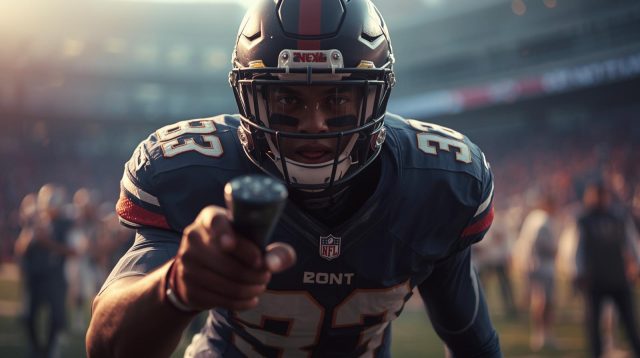Super Bowl commercials are more than just advertisements—they’re a cultural phenomenon that fans eagerly anticipate just as much as the game itself. Every February, viewers gather around the TV not only for the touchdowns but for the hilarious, heartwarming, and sometimes jaw-dropping commercials that have become major “water cooler” and social media moments. From unforgettable celebrity cameos to ads that tug at your heartstrings, Super Bowl commercials have a unique ability to capture attention and spark conversation long after the final whistle.
The significance of these commercials cannot be overstated. With tens of millions of viewers tuning in, each 30-second spot often comes with a multi-million dollar price tag. Beyond the hefty cost, the most memorable ads have the power to launch brands into pop culture stardom, introduce catchphrases that everyone repeats, and even change the way companies approach advertising for years to come. They are a showcase of creativity, storytelling, and marketing prowess all rolled into a short, compelling moment on screen.
In this list, we’re counting down the 10 most iconic, hilarious, and heartwarming Super Bowl commercials that have stood the test of time. From puppy love to cinematic masterpieces, these ads exemplify the best of what Super Bowl advertising has to offer. Let’s get started.
10. Budweiser – “Puppy Love” (2014)
A sweet golden retriever puppy keeps escaping his home to visit his best friend, a Clydesdale horse living at the nearby farm. Despite attempts to keep them apart, the bond between them proves too strong, culminating in an emotional reunion where the horse and his herd block the puppy from being taken away.
Budweiser’s “Puppy Love” became an instant classic because it struck the perfect balance between adorable and emotional. The commercial captured the power of friendship in a way that resonated far beyond beer advertising. With John Legend’s “All of Me” setting the tone, viewers were treated to a mini love story between two unlikely companions, showing that Budweiser knows how to create ads that connect deeply with the audience.
From a branding perspective, the ad was brilliant because it tied into Budweiser’s long tradition of using Clydesdales as a symbol of loyalty and strength, while adding a new emotional layer with the puppy. It wasn’t just about selling beer—it was about creating a cultural moment that everyone remembered the next day.
9. Pepsi – “Pepsi Generation” (feat. Cindy Crawford) (1992)
In this unforgettable spot, supermodel Cindy Crawford pulls up to a rural gas station in a red Lamborghini. Wearing a simple white tank top and denim shorts, she steps out, buys a can of Pepsi, and takes a refreshing sip while two young boys watch in awe. The twist? They aren’t admiring Cindy—they’re marveling at the sleek new Pepsi can design.
Pepsi’s 1992 “Pepsi Generation” commercial is a perfect example of how style, celebrity, and clever humor can collide to create an iconic moment. Cindy Crawford’s star power elevated the ad beyond a typical soda commercial, making it instantly recognizable and endlessly replayed. The clever punchline reminded audiences that even with glamorous distractions, Pepsi’s product design was still the star.
This ad makes the Super bowl commercials list because it perfectly encapsulated the flashy, stylish vibe of the early 1990s while cleverly positioning Pepsi as more than just a drink—it was a cultural trendsetter. The combination of humor and product placement turned what could have been a simple rebranding announcement into one of the most talked-about Super Bowl ads ever.
8. Reebok – “Terry Tate: Office Linebacker” (2003)
This outrageous commercial introduces Terry Tate, a fictional linebacker hired to keep office employees in line. Whenever someone slacks off, breaks company rules, or wastes time, Tate comes charging in with a bone-crunching tackle, followed by his booming voice delivering hilarious one-liners. The office quickly learns that underperforming isn’t an option when Terry Tate is around.
Reebok’s “Terry Tate: Office Linebacker” was a bold mix of absurd comedy and corporate satire, instantly standing out in a sea of traditional Super Bowl ads. The exaggerated hits paired with Tate’s over-the-top delivery had audiences roaring with laughter, making it one of the funniest Super Bowl commercials that still hold up today.
This ad blended sports culture with workplace humor in a way that felt fresh and wildly entertaining. It didn’t just advertise Reebok—it created a pop culture character who became so popular that additional webisodes and spin-offs followed long after the Super Bowl.
7. Old Spice – “The Man Your Man Could Smell Like” (2010)
In this instantly iconic commercial, a smooth-talking man, played by Isaiah Mustafa, addresses the audience directly while standing in a bathroom. Within seconds, he transitions to a boat, then a horse, all while delivering rapid-fire lines about how Old Spice can make “your man” smell amazing. The surreal transitions, humor, and charisma created a whirlwind of charm in just 30 seconds.
Old Spice’s “The Man Your Man Could Smell Like” wasn’t just funny—it was revolutionary. It completely redefined how a legacy brand could market itself to a younger, internet-savvy audience. By breaking the fourth wall, using absurdist humor, and leaning on viral-friendly content, Old Spice transformed a dated product into a cultural phenomenon. This is why it’s remembered as one of the most clever and creative Super Bowl ads of all time.
How Did it Change the Advertising Game?
Instead of targeting men directly, it spoke to women who bought products for their partners, while still appealing to male audiences through comedy and confidence. Its massive viral success on YouTube and social media proved that Super Bowl commercials could live far beyond game day, setting a new standard for how ads are created and shared.
6. Volkswagen – “The Force” (2011)
This charming ad features a young boy dressed as Darth Vader, trying to use the Force on everyday objects around the house. From the washing machine to the family dog, nothing seems to respond to his powers. Then, when his father arrives home in a Volkswagen Passat, the boy stands in front of the car and dramatically stretches out his hands. To his amazement, the car suddenly starts, thanks to Dad secretly using the remote start key from inside the house.
Volkswagen’s “The Force” worked because it was both heartwarming and hilarious. It tapped into pop culture with a universally loved Star Wars reference while showcasing the car’s technology in a creative and family-friendly way. The spot perfectly captured the sense of childhood imagination and wonder, making it instantly memorable to viewers of all ages.
This ad made in the list of best Super bowl commercials by showing how a brand can blend clever storytelling with product placement without feeling forced. It was one of the most shared and talked-about commercials of 2011, proving that even a car commercial could feel magical when executed with charm and creativity.
5. Snickers – “You’re Not You When You’re Hungry” (feat. Betty White) (2010)
In this hilarious commercial, a group of friends is playing a rough game of backyard football when one of them is revealed to be none other than Betty White, getting tackled into the mud. After some good-natured ribbing, another friend hands her a Snickers bar, and she instantly transforms back into her true self. The punchline? “You’re not you when you’re hungry.”
Snickers’ ad was a stroke of genius because it launched a whole new slogan and campaign that became instantly recognizable worldwide. Featuring Betty White, whose sharp comedic timing stole the show, the spot blended slapstick humor with a relatable message about irritability and hunger. It was the perfect mix of celebrity appeal and universal truth, making it one of the most talked-about ads of that year’s Super Bowl.
This commercial set the tone for a campaign that lasted for years and included other big-name stars. It showed the power of using humor, a clear message, and just the right celebrity cameo to create cultural impact. It also fits perfectly with the trend of Super Bowl commercials featuring famous movie characters and beloved entertainers, adding extra fun for viewers.
4. Budweiser – “Wassup?” (1999)
This unforgettable commercial features a group of friends connecting over the phone while watching a football game and drinking Budweiser. Instead of a normal greeting, each call escalates into the now-iconic cry of “Wassup?!” shouted back and forth in increasingly exaggerated ways. The simple yet hilarious exchange quickly spread like wildfire.
Budweiser’s “Wassup?” ad became legendary because it turned a casual greeting into one of the most memorable catchphrases in pop culture history. Everyone from teens to late-night hosts were repeating it, and it instantly entered the cultural lexicon. The genius lay in its simplicity—no flashy effects or celebrity cameos, just everyday guys having fun with a word. By leaning into authenticity and relatability, Budweiser struck comedic gold.
This ad makes the Super bowl commercials list not only for its humor but also for its lasting cultural impact. It introduced the famous catchphrase that dominated conversations, parodies, and even everyday greetings for years to come. While Budweiser is also known for the best Budweiser Clydesdale Super Bowl commercials, this spot proved the brand could dominate with comedy as well as heartwarming moments, cementing its place in Super Bowl history.
3. Coca-Cola – “Hey Kid, Catch!” (1980)
In this heartwarming commercial, Pittsburgh Steelers legend Mean Joe Greene limps down the stadium tunnel after a tough game. A young fan nervously offers him a bottle of Coca-Cola, which Greene gratefully drinks in one go. As the boy walks away, thinking the moment is over, Greene calls out and tosses him his game jersey, creating one of the most touching finales in advertising history.
Coca-Cola’s “Hey Kid, Catch!” became an instant classic because it combined sports hero worship with genuine emotion. The pairing of a tough football icon and a young admirer made the ad relatable to both sports fans and families, showing how something as simple as sharing a Coke could create an unforgettable bond. The sincerity of Greene’s performance, paired with the boy’s wide-eyed innocence, gave the commercial timeless appeal.
It is celebrated as one of the best Super Bowl commercials of the 1980s, not just for its emotional punch but for how it redefined the power of storytelling in advertising. The ad blurred the line between sports and popular culture, proving that commercials could resonate long after the game ended and cement themselves as cultural touchstones.
2. Wendy’s – “Where’s the Beef?” (1984)
In this iconic ad, three elderly women are examining a competitor’s oversized hamburger bun with very little meat inside. One of them, played by Clara Peller, delivers the unforgettable line: “Where’s the beef?” Her no-nonsense tone and deadpan delivery made the phrase instantly quotable and endlessly repeated across the country.
Wendy’s struck gold with this commercial because it managed to be funny, sharp, and brutally honest about fast-food competition. The humor wasn’t forced—it came naturally from the character’s delivery and the exaggerated visual of a tiny burger patty hiding inside a massive bun. By highlighting the lack of substance in rival burgers, Wendy’s positioned itself as the brand with more to offer.
The “Where’s the beef?” catchphrase quickly moved beyond advertising, entering everyday conversations, late-night comedy, and even political campaigns. It proved that a well-placed slogan could dominate pop culture and bring brand awareness to new heights, turning a regional fast-food chain into a household name practically overnight.
1. Apple – (1984)
In this cinematic commercial directed by Ridley Scott, a dystopian world of gray uniforms and emotionless workers is dominated by a Big Brother figure on a giant screen. Suddenly, a lone, athletic heroine in bright colors storms the scene and hurls a sledgehammer at the screen, shattering it. The ad ends with the message that Apple Macintosh will “change the world,” symbolizing liberation from conformity and the status quo of personal computing.
Why Was the Apple “1984” Super Bowl Ad so Revolutionary?
Apple’s “1984” was revolutionary because it treated a 60-second commercial as a mini blockbuster film rather than a traditional product pitch. With cinematic visuals, suspenseful storytelling, and a dramatic score, it completely broke the mold of conventional advertising. Instead of focusing on product features, the ad created an emotional narrative, positioning Apple as the underdog challenging the corporate giants of the tech world. This approach changed how brands thought about storytelling in advertising forever.
Did it Have a Massive Cultural Impact?
Absolutely. Airing only once during the Super Bowl, the commercial immediately became a national talking point. It not only generated massive media coverage but also influenced pop culture, inspiring references in films, television, and future ads. The ad cemented Apple’s identity as innovative and rebellious, setting the stage for decades of marketing brilliance. Making it the ultimate example of creativity, the Apple “1984” spot continues to be cited as one of the most important and groundbreaking ads in Super Bowl history.
Honorable Mentions: Ads That Almost Made the Cut
- Tide – “It’s a Tide Ad” (2018): Cleverly disguised as other brand commercials, this campaign kept viewers guessing while showcasing Tide’s cleaning power in hilarious ways.
- E*TRADE – Baby Commercials (2000s): Featuring a precocious talking baby giving financial advice, these spots were funny, memorable, and helped make online investing approachable.
- Doritos – “Crash the Super Bowl” Campaign (2000s–2010s): Fan-submitted commercials like “Goat 4 Sale” brought creativity, humor, and unpredictability to the Super Bowl stage.
- Budweiser – “Clydesdales: Brotherly Love” (2013): Continuing the legacy of heartwarming Clydesdale ads, this commercial tugged at viewers’ heartstrings with a story of loyalty and friendship.
- Honda – “Rube Goldberg Machine” (2003): A visually stunning ad that used a chain-reaction machine to showcase Honda products, combining ingenuity, fun, and cinematic precision.
Conclusion
The best Super Bowl commercials share common threads that make them unforgettable: compelling storytelling, humor that sticks with viewers, and emotional connections that resonate long after the game ends. From heartwarming puppy friendships to hilarious celebrity cameos and groundbreaking cinematic spots, these ads prove that creativity and smart messaging can turn a short commercial into a cultural phenomenon.
What’s your all-time favorite Super Bowl commercial? Did we miss one on our list? Let us know in the comments below and join the conversation about the most memorable ads in Super Bowl history.
Frequently Asked Questions
Q: What is the most famous Super Bowl commercial of all time?
One of the most famous Super Bowl commercials of all time is Apple’s “1984” ad. Aired during Super Bowl XVIII, it introduced the Macintosh computer with a cinematic, dystopian storyline and became a cultural phenomenon, setting a new standard for creative advertising.
Q: Which brand is known for the best Super Bowl ads?
Budweiser is widely recognized for creating some of the best Super Bowl ads, particularly its heartwarming Clydesdale commercials. Other brands like Coca-Cola, Pepsi, Old Spice, and Apple have also consistently produced memorable, iconic spots that resonate with viewers and dominate pop culture conversations.
Q: How much does a 30-second Super Bowl commercial cost in 2025?
In 2025, a 30-second Super Bowl commercial costs approximately US$ 8 million on average. Prices vary depending on factors like network, time slot, and production scale, but Super Bowl ads remain one of the most high-profile and expensive forms of advertising.



